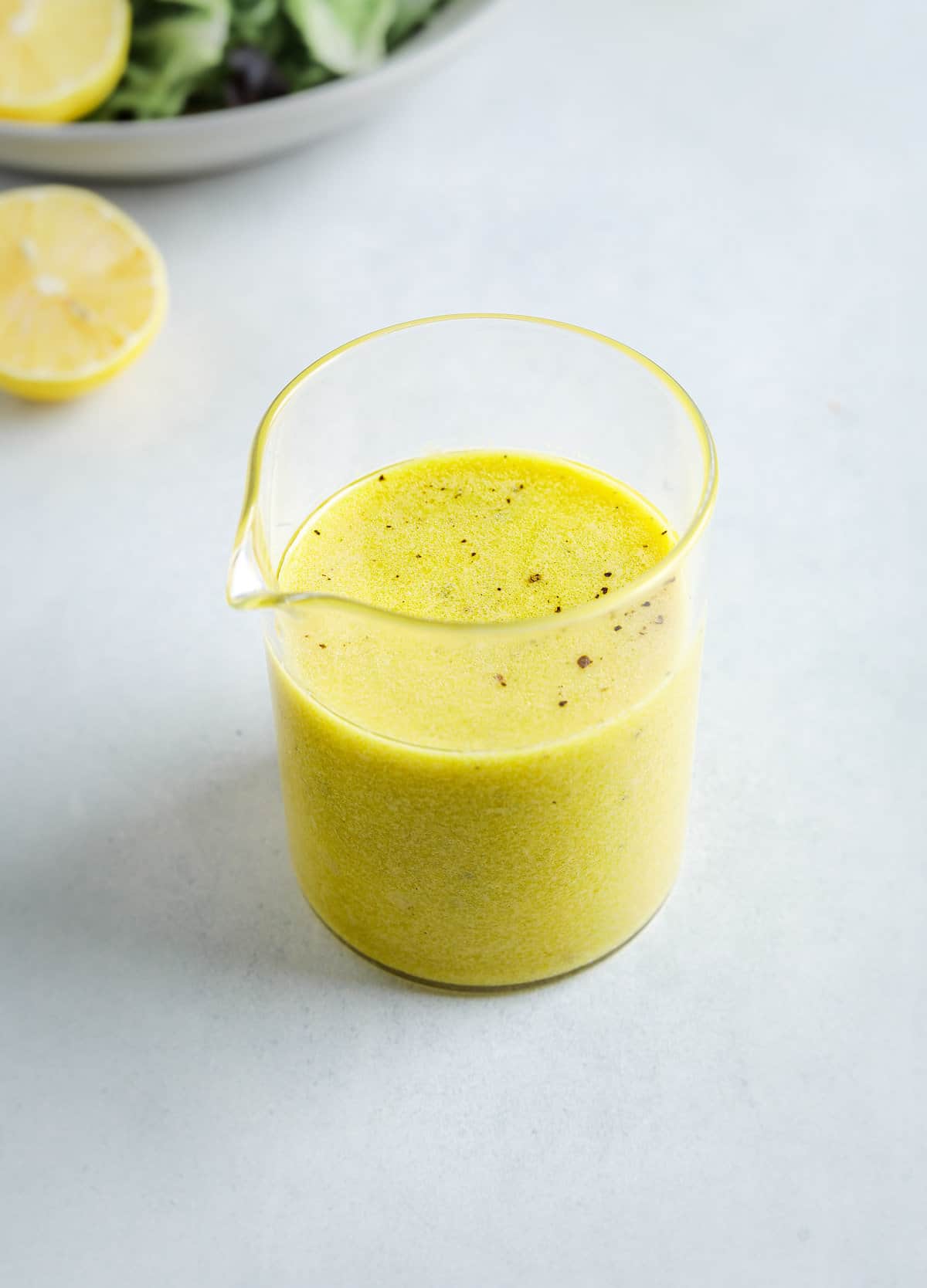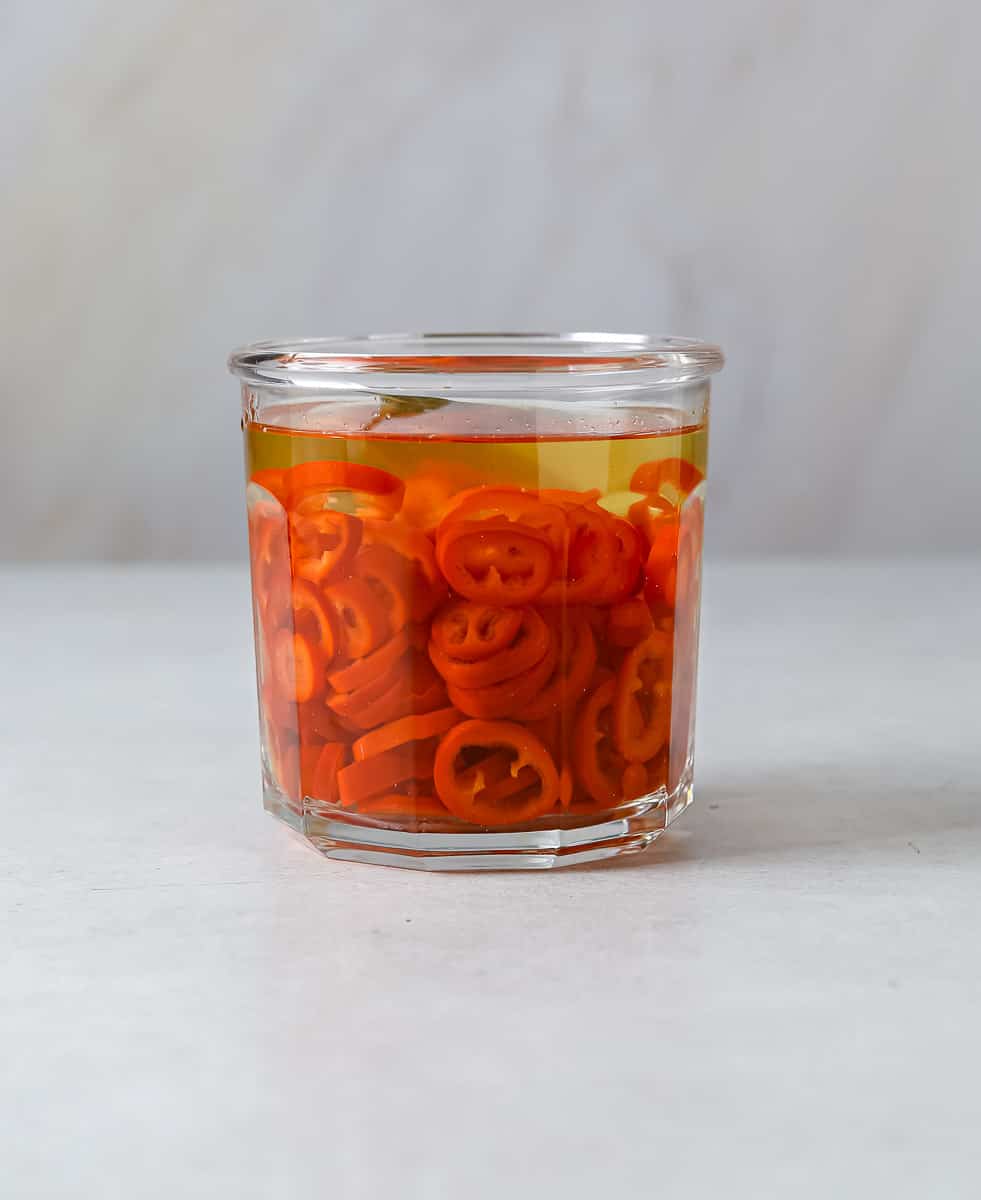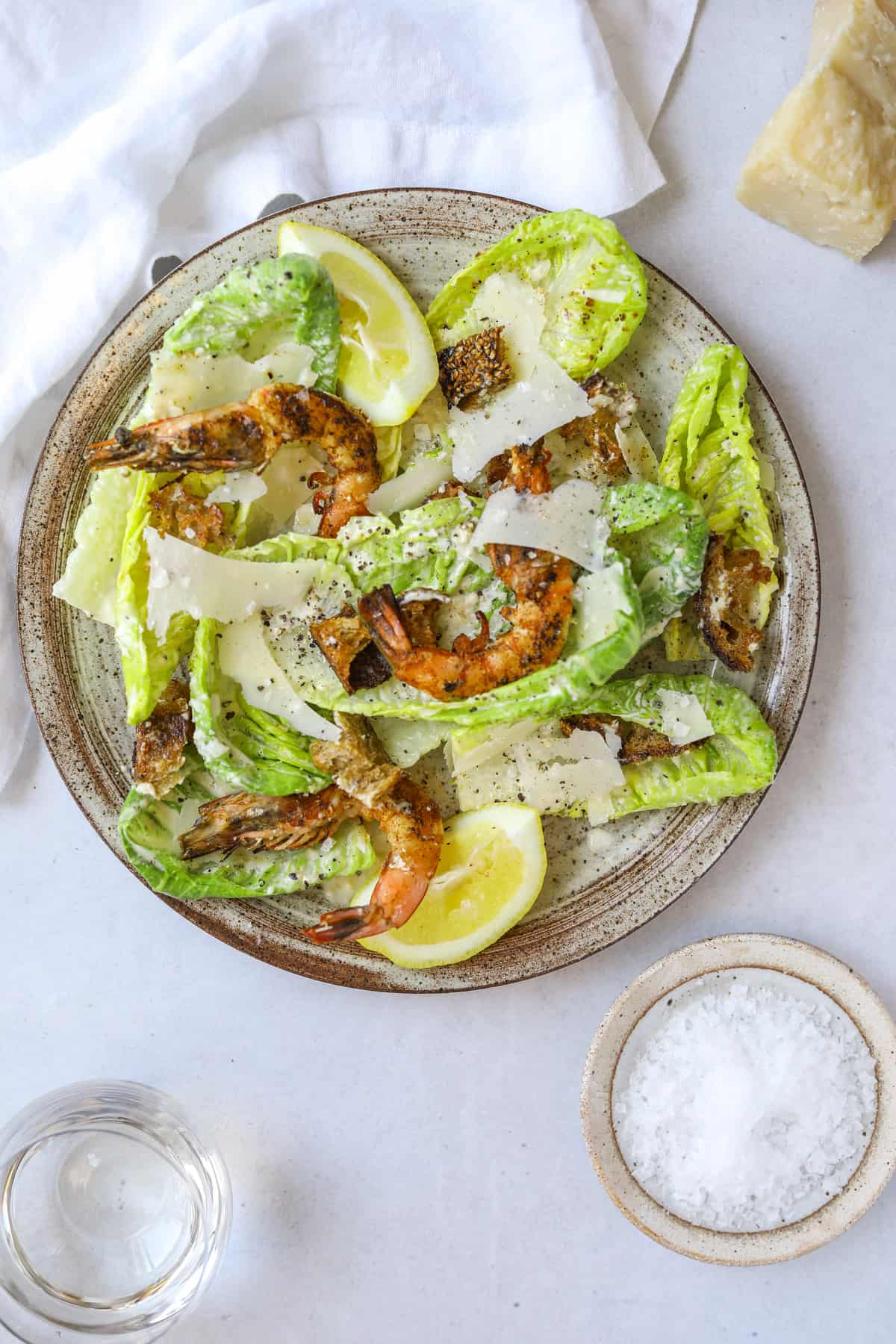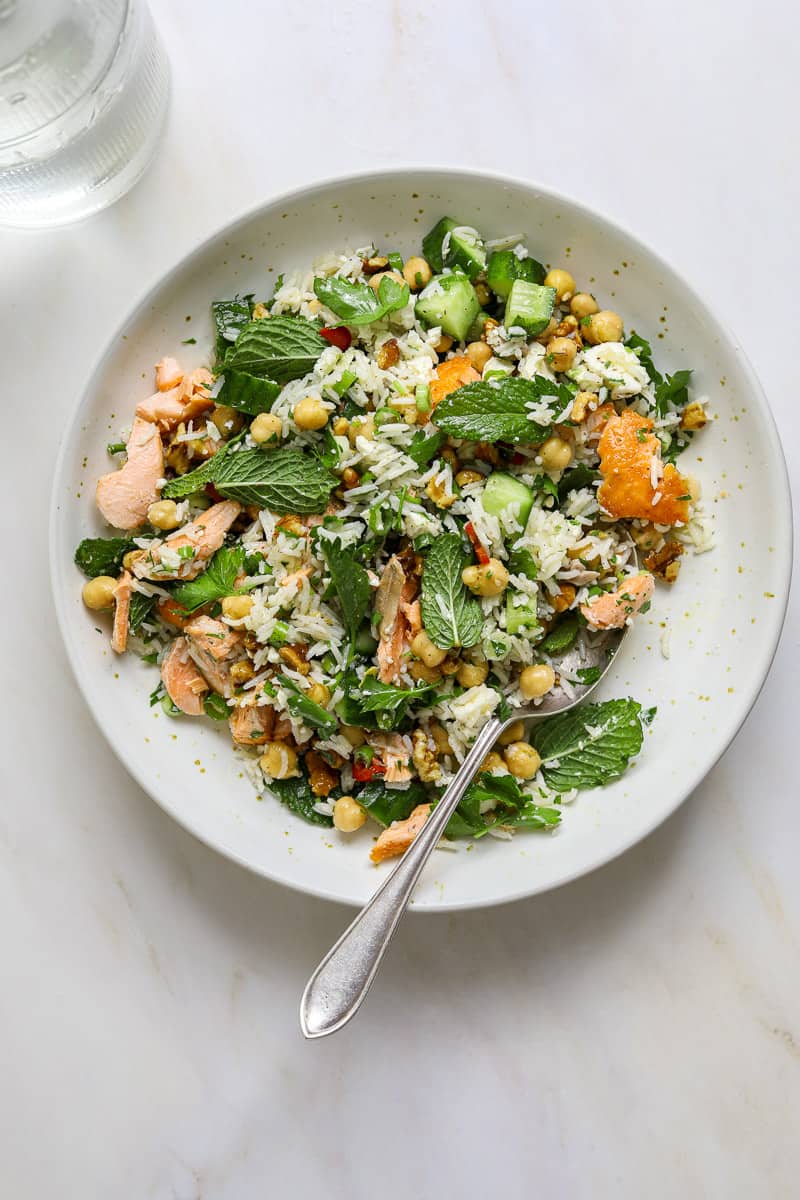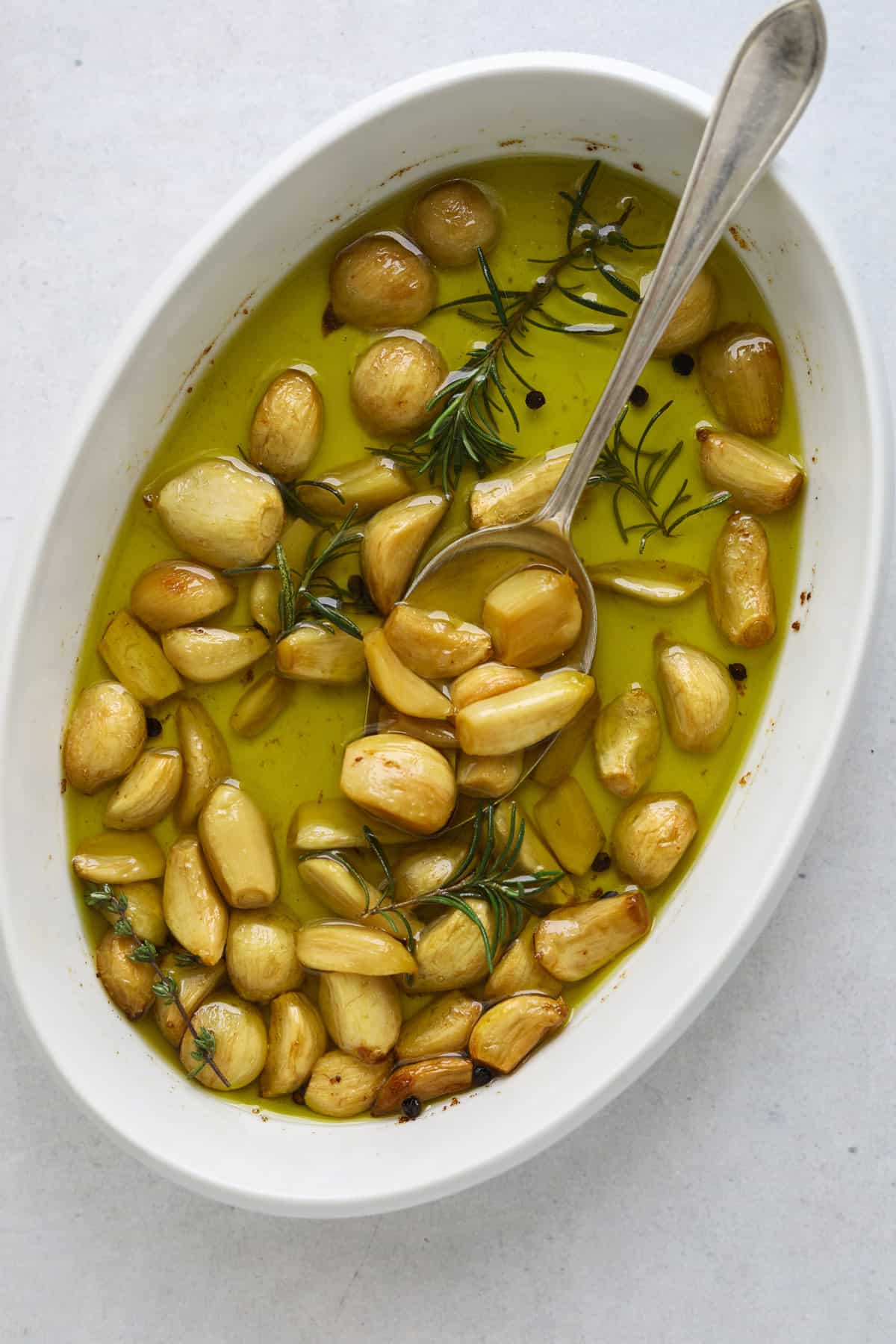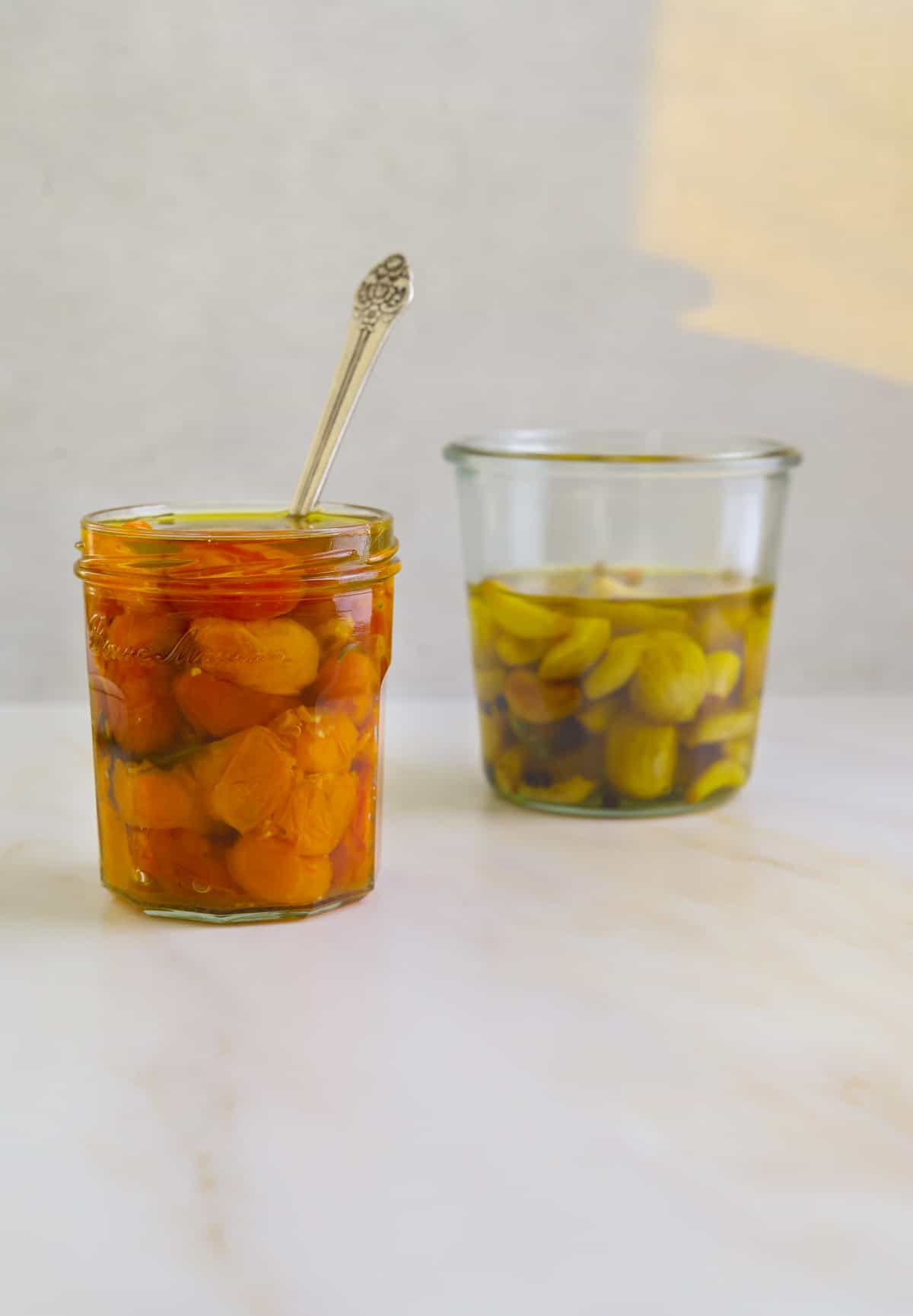How-To Make a Perfect Vinaigrette
Making a perfect, puckery vinaigrette is all about balance. Once you understand the basic formula the possibilities are endless.
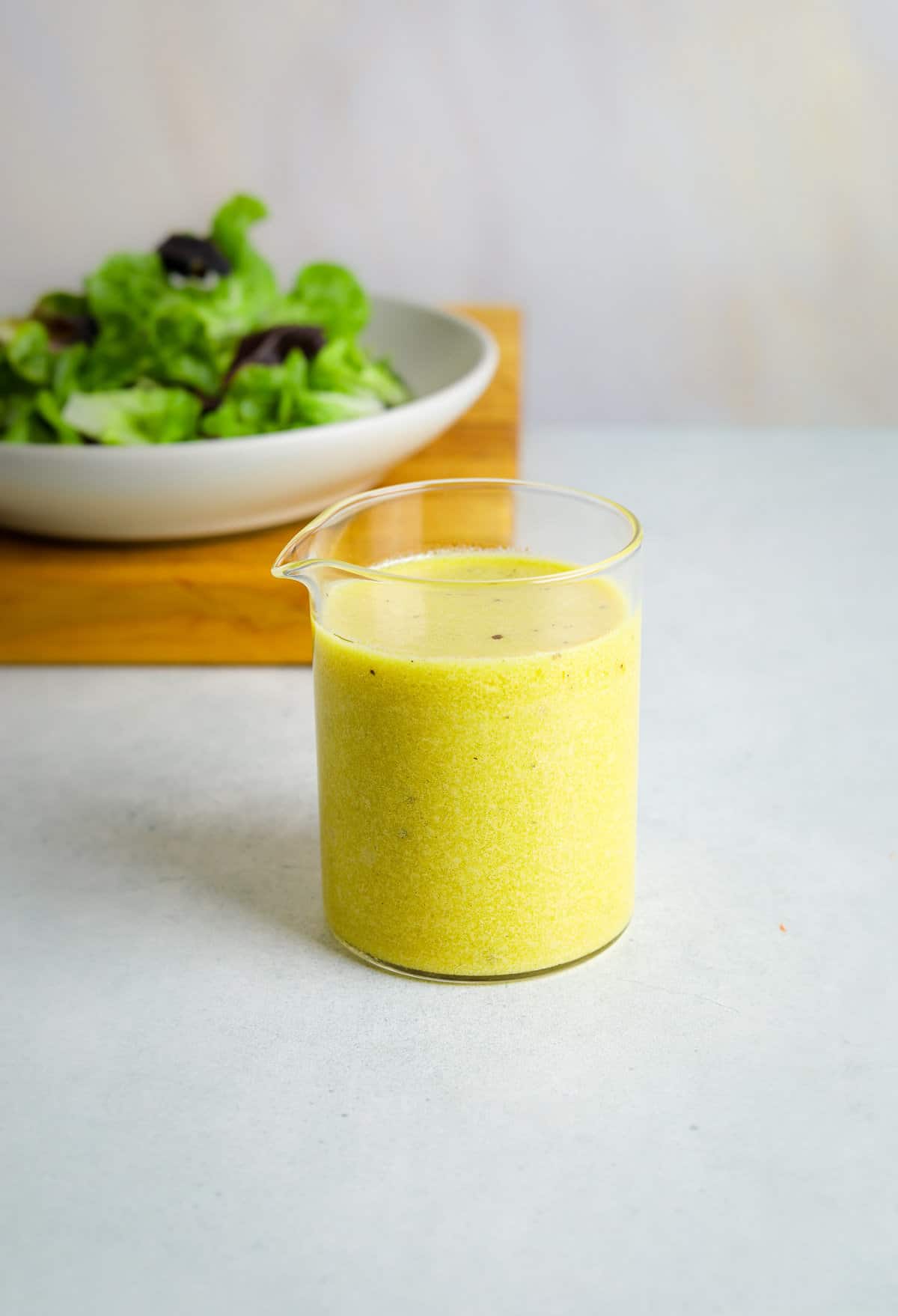
Attn: You need to stop buying pre-made salad dressing – seriously!
I admittedly, love a good semi-homemade kitchen hack. Transforming store-bought rotisserie chicken into a proper meal? Love it. Jarred BBQ sauce for ribs? Not a problem. Turning pre-peeled garlic into garlic confit? I encourage it!
There is, however, one thing I never buy pre-made and that is salad dressing. Whether it’s bottled in the dry goods aisle or refrigerated it doesn’t matter, it’s not worth it. Learning to making a simple homemade salad dressing is a fundamental skill for any home cook and well worth the extra effort. It’s actually one of the first things we were taught to make in culinary school.
Nailing The Ratio of Oil to Acid:
Traditionally the ratio of oil to acid for a vinaigrette is 3-1. That’s three-parts oil to one part acid (like vinegar or lemon juice). I personally prefer a sharper more acid-forward vinaigrette. I like a 2-1 ratio, two parts oil to one part acid results in a much brighter and more flavorful dressing. I encourage you to play around with the ratio of oil to acid and find out what you like best.
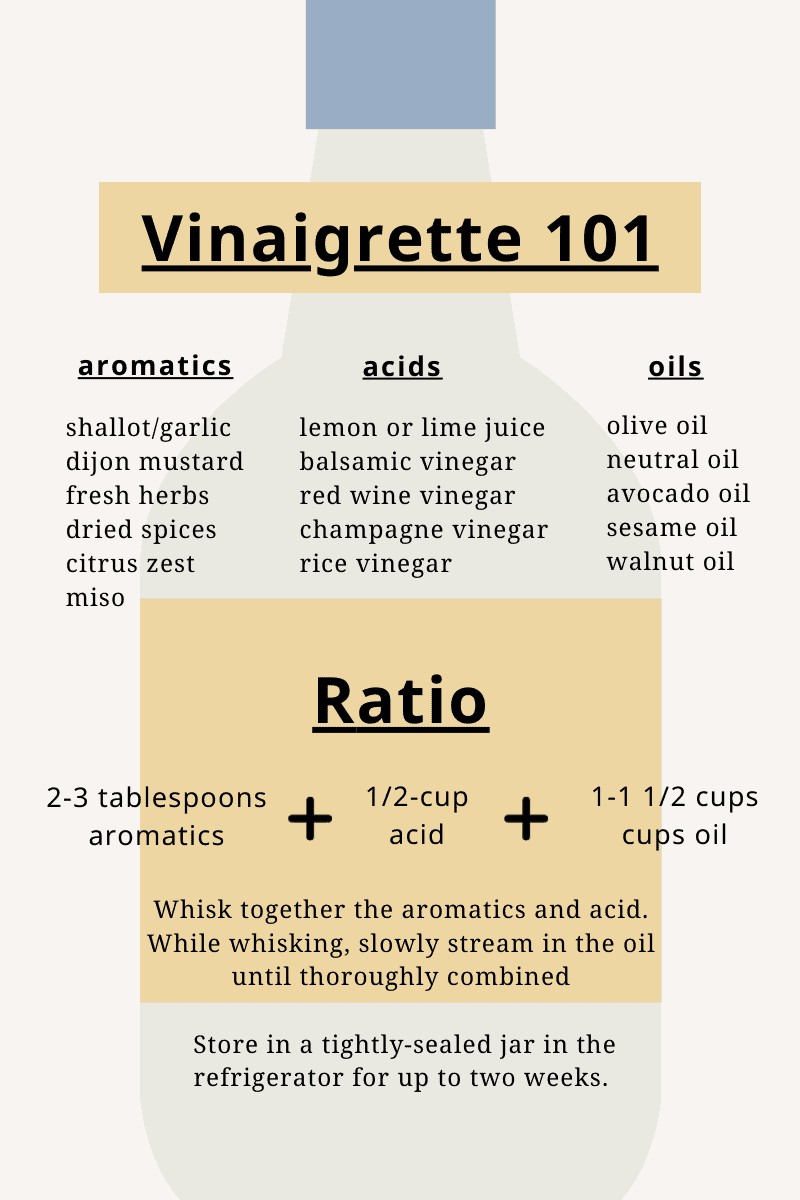

3 Ways to Make a Vinaigrette
- In a bowl: This is the most classic way to make a vinaigrette and gives you the most control over the flavor and viscosity. Start by whisking the vinegar and whatever flavor enhancers you’ll be adding (shallot, dijon, herbs etc) then slowly stream in the olive oil while whisking.
- In a Glass Jar: Throw everything in a jar, screw on a lid a give it a good shake. As an added bonus you can store the leftover dressing in the same jar so less mess!
- In a blender: This method is great for creating a strong emulsion. Because the blender is so powerful you can throw all the ingredients in at once, blend for a few seconds, and then you’re done.
Emulsification and Why it’s Important:
We all know that oil and vinegar do not naturally want to mix together. Through to process of emulsification, we can force the two to bind together through whisking or blending along with the help of a few key ingredients knows as emulsifiers. Mustard, honey, garlic, and egg yolk are all emulsifiers. Adding one of these ingredients to the base of your vinaigrette not only helps hold things together, but adds flavor and viscosity to your dressing.
Why does any of this matter? When vinegar and oil molecules are bound together in a salad dressing the mixture evenly coats each bite of lettuce. If the dressing is “broken” or in other words, the oil and vinegar are not emulsified but instead separated, the oil will stick to the lettuce but the vinegar will slide right off and end up in the bottom of your bowl resulting in a bland oily bite of salad.

Vinaigrette: Not Just A Salad Dressing
Vinaigrettes are versatile dressings that can be used to enhance the flavor of a wide variety of foods, not just salads. This Chicken Paillard is pan-seared then doused in a lemony mustard vinaigrette. These Crispy Chicken Thighs are cooked in a cast iron pan then served with a toasted coriander vinaigrette. Last, but not least these roasted brussels sprouts tossed in a savory Bacon Vinaigrette.
Our Favorite
Vinaigrettes and Salad Dressings:
I love to hear from readers and always do my best to respond to each and every comment. If you make this recipe be sure to leave a comment and/or give it a rating! Don’t forget to follow along on Pinterest, Facebook, and Instagram for all the latest updates!
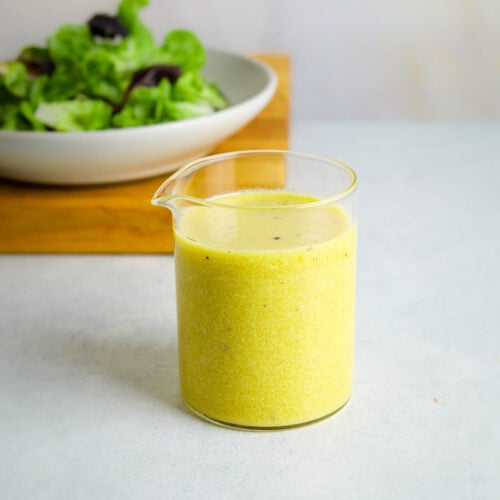
Classic Lemon-Dijon Vinaigrette
Ingredients
- 2 tablespoons dijon mustard
- 1/4 cup lemon juice
- 1 teaspoons lemon zest optional
- 1 small shallot, finely minced about 2 tablespoons
- 1 cup olive oil
- salt and freshly cracked black pepper
Instructions
- In a medium-sized mixing bowl bowl, whisk together the mustard, lemon juice, zest and shallot. While whisking slowly stream in the olive oil, whisking continuously until all of the oil is incorporated.
- Season the dressing with freshly cracked black pepper and 1/4 teaspoon kosher salt. Use right away or store in a glass jar with a tightly fitting lid, in the refrigerator for up to two weeks.
Notes
- In a Glass Jar: Throw everything in a jar, screw on a lid a give it a good shake. As an added bonus you can store the leftover dressing in the same jar so less mess!
- In a blender: This method is great for creating a strong emulsion. Because the blender is so powerful you can throw all the ingredients in at once, blend for a few seconds, and then you’re done.
Nutrition
